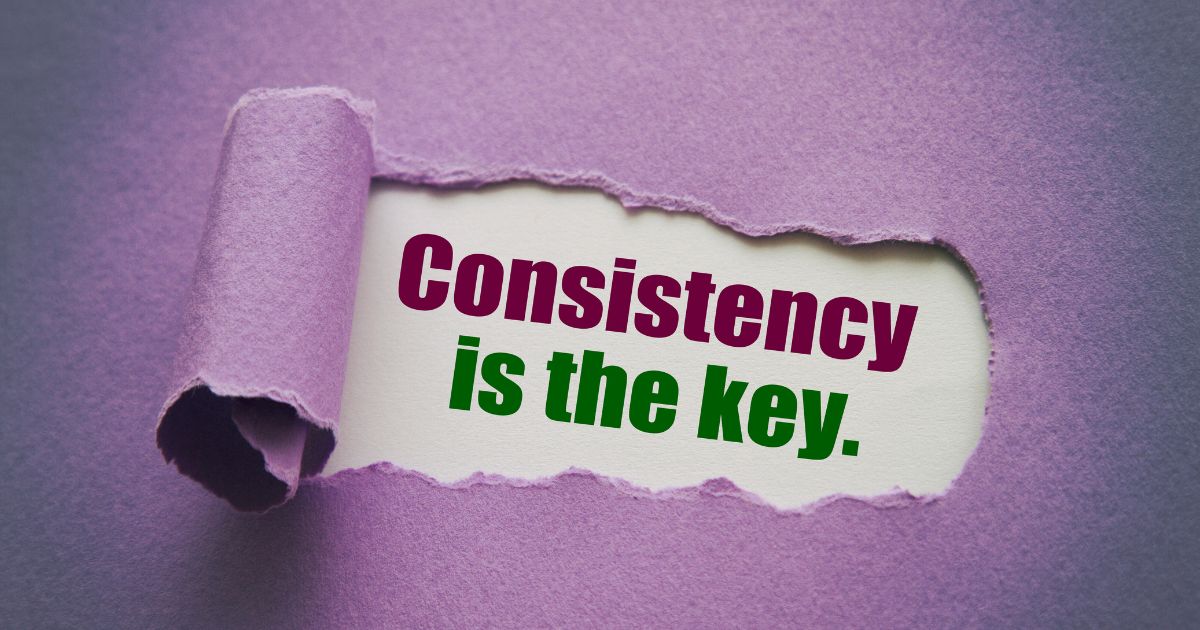How to Create Enterprise Content Marketing Strategy for Global Success in 2025

Why Is Content Marketing Important for Enterprises?
Previously, enterprises used content strategies to reach a large target audience. Fast forward to today, enterprise marketers view content from another perspective.
A customer-centric content strategy is now crucial for building authority and awareness.
Take, for example, IBM’s “Think Blog.” The IBM Think Blog is a vast library of product and community-related content. It’s not just about IBM’s tech products. They also talk about diversity, consumer behavior, and wellness.
It’s a great example of solving customer pain points through content creation. This allows IBM to establish topical authority and brand awareness. Moreover, it’s an excellent way to stay ahead of their competitors.
Visibility, reliability, and authority — you name it. Content marketing encompasses growth-driving factors for enterprise organizations. Content is already a game-changing element in the whole enterprise digital marketing process.
How to Develop an Enterprise Content Strategy
Your content roadmap starts with your own business goals.
Are you diversifying into a new market? Is it your goal to be visible on a specific social media platform? Or are you focusing on driving higher conversion rates?
Aligning your enterprise content with business objectives sets you up for success. Even the most successful SaaS companies start their content marketing this way.
Of course, identifying business objectives is just the first step. Here are other proven tips in developing a large-scale content marketing strategy:
- Be realistic: Use the SMART (Specific, Measurable, Achievable, Relevant, Time-bound) goal structure. Track these goals using analytics tools like Google Analytics and Sprout Social.
- Track relevant metrics: Focus on tracking Key Performance Indicators (KPIs) that are directly aligned with your content strategy.
- Create buyer personas: Buyer or audience personas are detailed profiles of potential customers. These profiles pertain to their demographics, pain points, and engagement patterns. This step is essential for producing personalized content.
- Identify profitable channels: Distributing content to multiple channels is a trend today. However, you need to prioritize platforms that are most profitable to your business.
- Organize a calendar: Create a content calendar to maintain a consistent workflow. Use project management tools like Asana and Coschedule to schedule content in advance.
You can also reach diverse audiences through different content formats. In the next section, we’ll discuss this aspect of content development.

How to Create Content for Enterprises?
Enterprise content strategy is unique for its scalability needs.
How can you create content for a customer base that grows daily? By targeting every stage in the buyer’s journey, you can.
Mapping the sales funnel allows you to develop the right content for each stage. Here’s how you can do it:
- TOFU (Top of the Funnel): Use thought leadership to resonate with a broader audience. Attract interest by providing hacks or tips around common industry challenges.
- MOFU (Middle of the Funnel): Focus on more specific content to your niche. Offer free webinars, case studies, and ebooks centered around your products. Nurture leads by showing them your particular expertise.
- BOFU (Bottom of the Funnel): This stage is the closest to a potential conversion. Clients may be on the verge of purchasing or subscribing to your product. Grab this opportunity by offering free product demos. You can also show videos of customer success stories.
Creating generic content doesn’t work for an enterprise organization. Provide content updates that offer true solutions to every customer’s needs.

How to Optimize Content for Global Reach?
A company must have a global reach to reach enterprise status. This makes International SEO essential in an enterprise content strategy.
Websites use international SEO to rank higher in search results for international audiences. This allows businesses to reach new markets and brand authority.
For this to work, it’s necessary to translate your content to various languages. Here are current techniques for localizing web content:
- Market analysis: Prioritize markets that have high demand for your products. Conduct market research reports to understand local audiences.
- Cultural considerations: Appropriate your content to the local audience to identify cultural nuances. Relying on AI-generated translation isn’t enough. Work with a human translator to ensure effective content adaptation.
- Hreflang tags: Hreflang tags adapt your website language to the user’s location or language setting. Place these tags within the <head> section of your website’s HTML code.
- Influencer partnership: Partner with local influencers in promoting your localized content. When done the right way, influencer marketing becomes an important aspect of content marketing.
Moreover, be mindful of content regulations in different markets. Your marketing team should stay updated about local regulations on publishing content.
How to Leverage Technology in Content Marketing?
Organizing content workflow could be tricky for large-scale businesses. That’s why you should have an on-point enterprise content management strategy.
It’s a bit of a cliche, but technology absolutely helps you here. For example, Coca-Cola utilizes Adobe Experience Manager to manage content efficiently. Adobe helps Coca-Cola automate processes in global campaigns, targeted content, and landing page optimization.
Leveraging technology allows for a more efficient content strategy. Enterprise organizations should integrate technology in these areas:
- Management: A Content Management System (CMS) helps you manage content in one platform. You can use CMS platforms like WordPress, HubSpot CMS, or Shopify.
- Distribution: Automate the process of publishing and distributing content. For example, you can use Hootsuite to schedule a blog post across multiple platforms.
- Personalization: AI tools can help generate personalization prompts and ideas. Use these prompts to create content around trending topics.
- Interaction: Take a different approach by offering Augmented Reality (AR) interaction. This can increase content interaction and brand recall.
Strategic use of technology can boost quality and efficiency. These tools help you achieve specific goals in your enterprise content strategy.

Multichannel and Integrated Marketing Approaches
Red Bull does multichannel content marketing to perfection.
This brand is known for its catchy “Red Bull Gives You Wings” catchphrase. It’s not just that, though. Red Bull strikes an excellent balance between traditional and digital marketing.
They have multiple teams working on social media platforms and live events. Their video content is top-notch, displaying exhilarating publicity stunts on digital platforms. This is a great example of an enterprise content strategy done in multiple channels.
Enterprise marketers should look at Red Bull as inspiration for multichannel content. Here’s how you can integrate a multichannel approach:
- Get trendy: QR codes on print materials are becoming essential for marketing. A QR code should link to one of your landing pages.
- Consider traditional channels: Traditional marketing remains a channel for building authority and reliability. Host live events or sponsor products relevant to your niche.
- Maintain consistency: Ensure that your branding is similar on all platforms. Consistent messaging tone and CTAs lead to higher brand recall.
Collaboration is also recommended for your marketing team and other internal teams. Cross-functional teams make it easier to streamline content across different channels. Make sure that you communicate your goals across your organization.

Measuring and Analyzing Content Impact
Every content marketer knows that there’s no one-off enterprise content marketing strategy.
Enterprise companies rely on analytics and metrics for this reason. Tracking KPIs allows you to gauge content effectiveness. This data serves as an alert to optimize content when necessary.
Take a look at some of the most important metrics in content marketing today:
- Website: Analyze metrics like top-performing pages, bounce rate, click-through rate, and session duration. Use website analytics like Mixpanel and Adobe Analytics.
- Social media: Track engagement metrics like comments, shares, and reach. Buffer and Zoho Social are excellent social media analytics tools.
- CMS: Monitor CMS metrics like video playbacks and form submissions. Most CMS platforms like Wix have built-in analytics features.
Conducting A/B Testing is also a good way to measure content effectiveness. Test different content variations to identify positive points.

Overcoming Challenges with Enterprise Content Marketing
Enterprise content marketing has its roadblocks. Take a look at these common obstacles:
- Scalable workflow
- Content saturation
- Inconsistent brand voice
- Collaboration issues with different teams
- Compliance concerns
Content marketing is a difficult proposition, even for a large organization. Of course, there are ways to work around it. For instance, repurposing existing content can help solve scalability issues.
But what about the other obstacles that you need to navigate? Instead of navigating these obstacles by themselves, successful companies work with external marketing experts. It’s a cost-effective way of maximizing resources and processes.
For example, marketing experts like Fortis Media optimize your content strategies. They continuously study the market to develop innovative strategies, which help you maximize your resources and potentially drive more sales.
Enterprise Content Marketing: Key Takeaways
The process is challenging, but enterprise content strategy is equally rewarding.
A large business faces unique challenges compared to smaller businesses. An enterprise content strategy should address scalability and consistency. Collaboration across various teams in your organization is also a challenge.
Thankfully, technology is here to back us up. That’s not to say that tech or AI can replace our content strategies. However, you can collect analytics and personalization data to boost visibility in the industry.
Keeping up with content marketing technologies is key for your company. Utilize data-driven insights to support customer needs through your content.
FAQS ABOUT ENTERPRISE CONTENT MARKETING
What are the 4 pillars of content marketing?
The four pillars of content marketing are context, channels, connections, and conversions. Context is about understanding customers’ pain points, while channels refer to content distribution. Moreover, connections refer to building customer relationships, while conversions highlight revenue and sales.
How can enterprise content marketing influence customer retention?
Enterprise content marketing supports customer retention through authenticity, personalization, and interaction. A large company can address customer churn by offering helpful content and personalized experiences. You can also bank on trending content forms like video posts to effectively engage with your customers.
How often should an enterprise review and update its content strategy?
Large companies should update their content strategy at least annually. Regularly optimizing your content helps you address industry trends, competitor movements, and customer pain points. Depending on your niche, you can consider quarterly content updates for a more agile approach.
Can enterprise content marketing be cost-effective for small or niche markets?
Enterprise content marketing saves costs for niche markets with a targeted approach. Use analytics tools to determine your customers’ specific needs, then segment them based on demographics and pain points. This targeted strategy helps you build relationships on a personal level and potentially drives more sales to your business.
Read our other articles

Google March 2025 Core Update: iGaming Industry Impact with Real Cases


Benefits of Enterprise SEO: Why Large-Scale Businesses Need It


B2B SaaS SEO: Best Practices and Strategy for 2025






